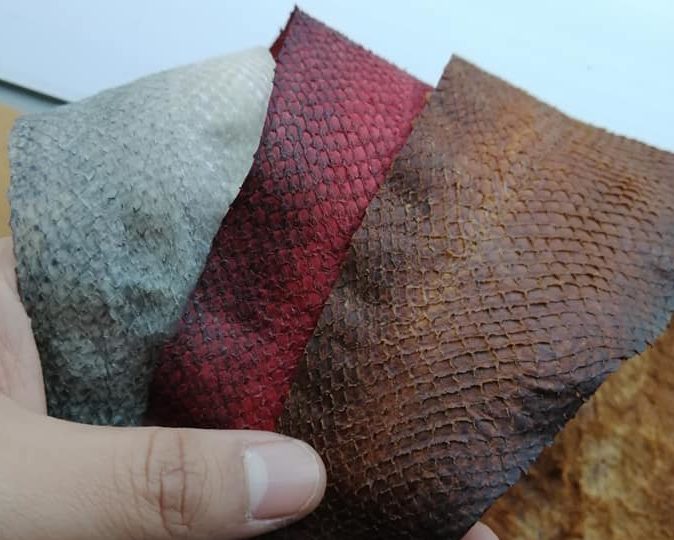
18 Dec Indigenous Youth Revitalize Traditional Fish Skin Leather Technique
The Indigenous Youth Ambassadors (IYAs) at the Squamish Lil’wat Cultural Centre were head over heels to be a part of a revitalization workshop of bringing back the technique of making fish skins into leather.
The IYAs spend fifteen weeks working with and trying many different cultural and business practices at the SLCC. They gain industry certifications, provide the guest experience in our retail, food and beverage, cultural growth and sharing departments, and most importantly have a deep connection with the culture by working with leaders in our communities who carry traditional knowledge. The Youth try their hand at traditional art forms, practice songs and dances that have been passed down for generations, and so much more!
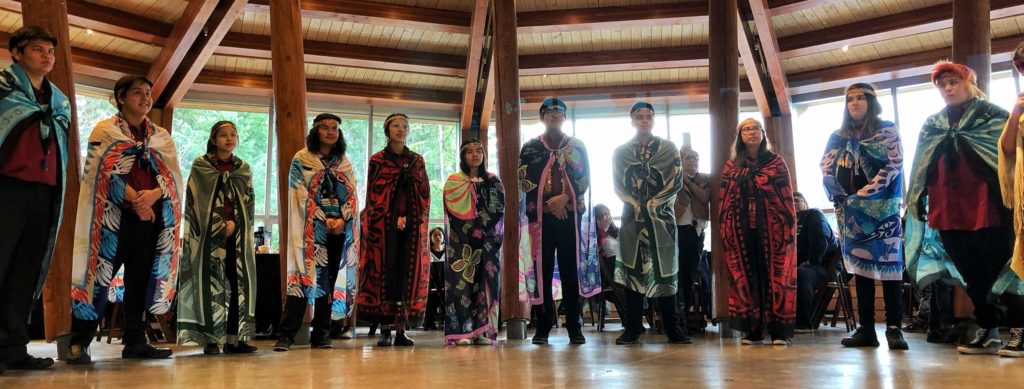
One of the highlights for this current cohort and its leaders is being a part of the revitalization of making fish skins into leather. This ancient technique was practiced not only in our Squamish and Lil’wat communities, but all over the world. Our teacher, Janey Chang, is of Chinese descent and shared how fish skin was made into leather and is exploring methods used by her ancestors.
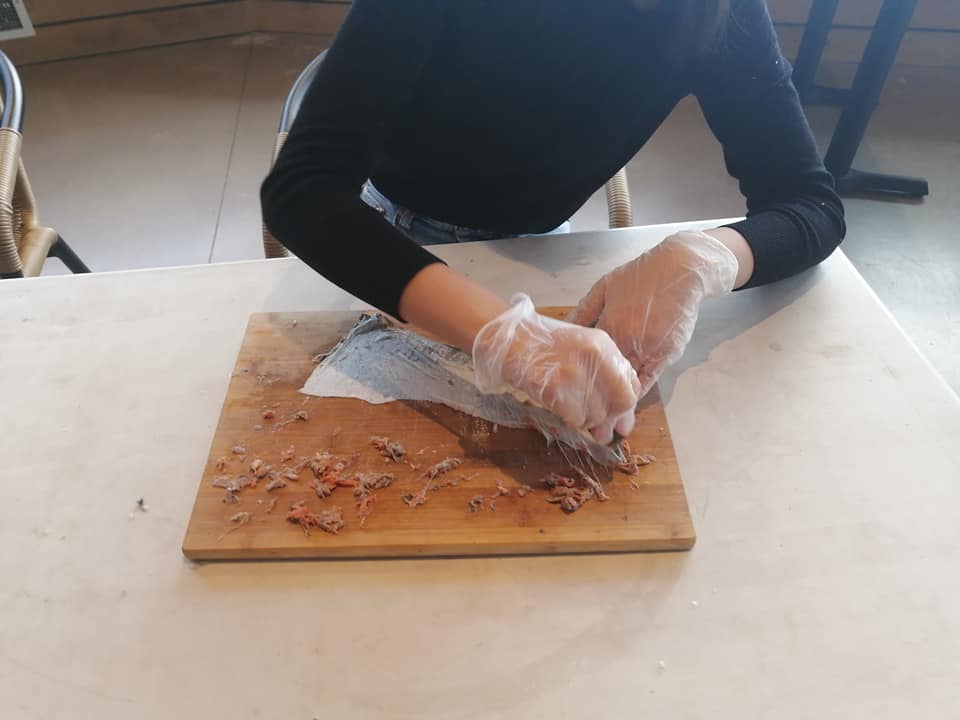
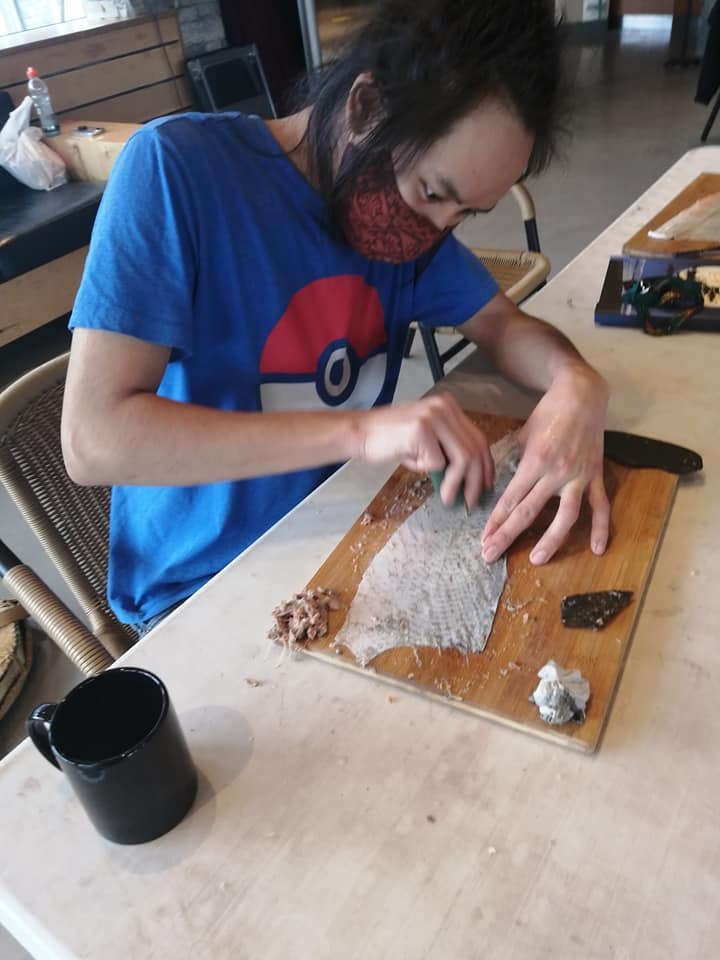
The two-day workshop taught the youth two different methods: tanning with fats and oils, and tanning with tannins:
Tanning with Fats and Oils
The skins are scraped of fat and flesh, to be coated later with a fat solution. After scraping, the skins are stuck on the window and stretched out flat for one week to maximize sunlight exposure:
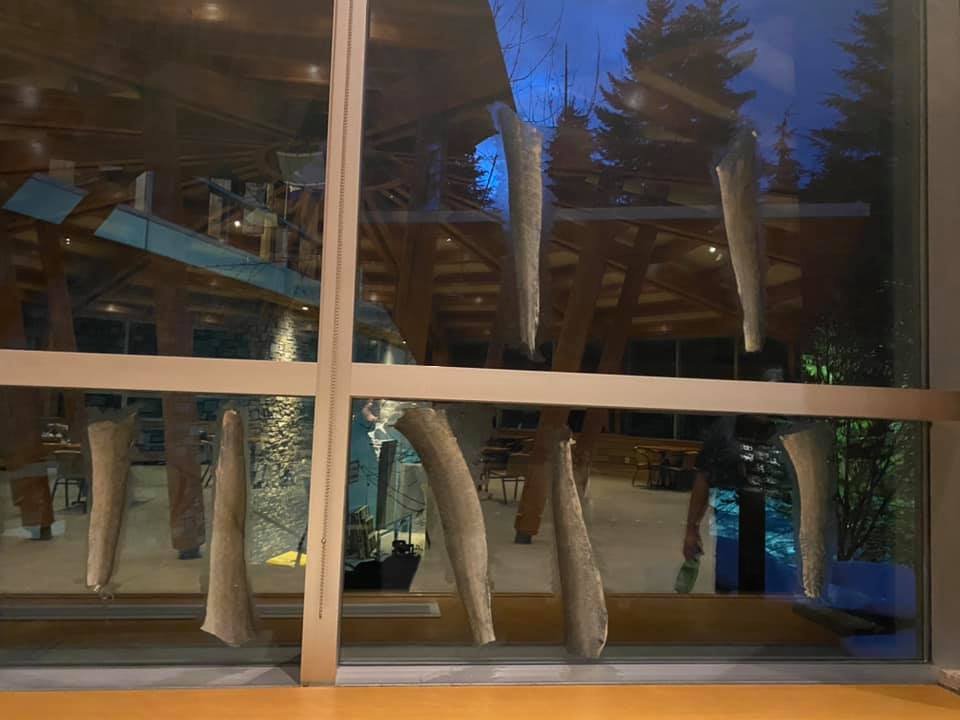
After one week the skins are washed, excess water removed, and the fibers are softened by hand with force for the skin to get the feel of leather. To help soften, we had used several fats and oils: coconut oil, beeswax mixed with olive oil, bacon grease, and Neatsfoot oil.
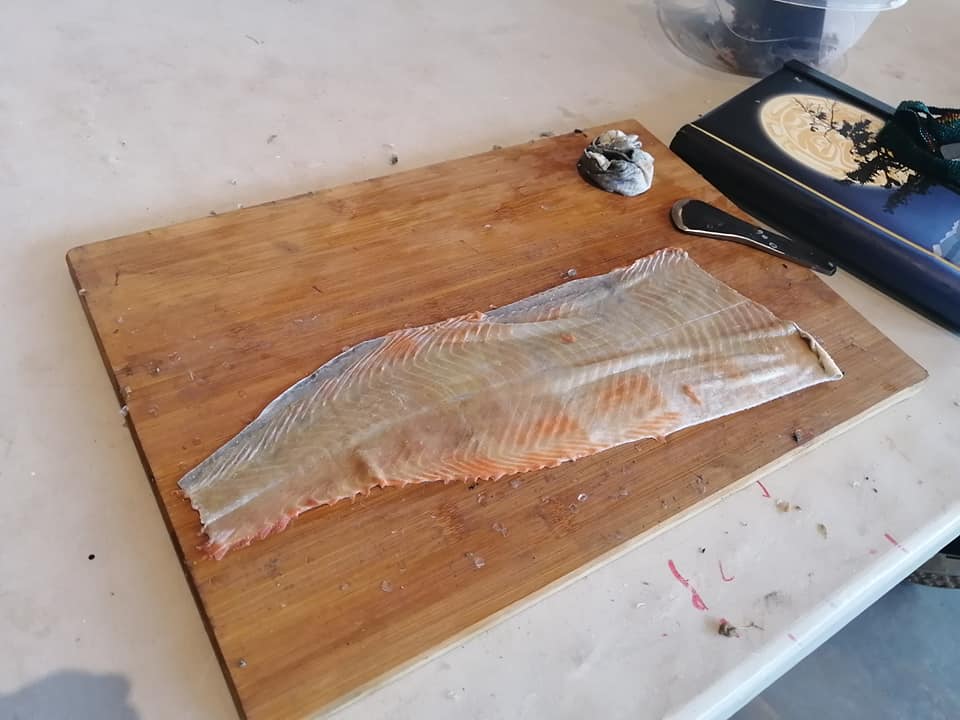
A scraped fish skin. 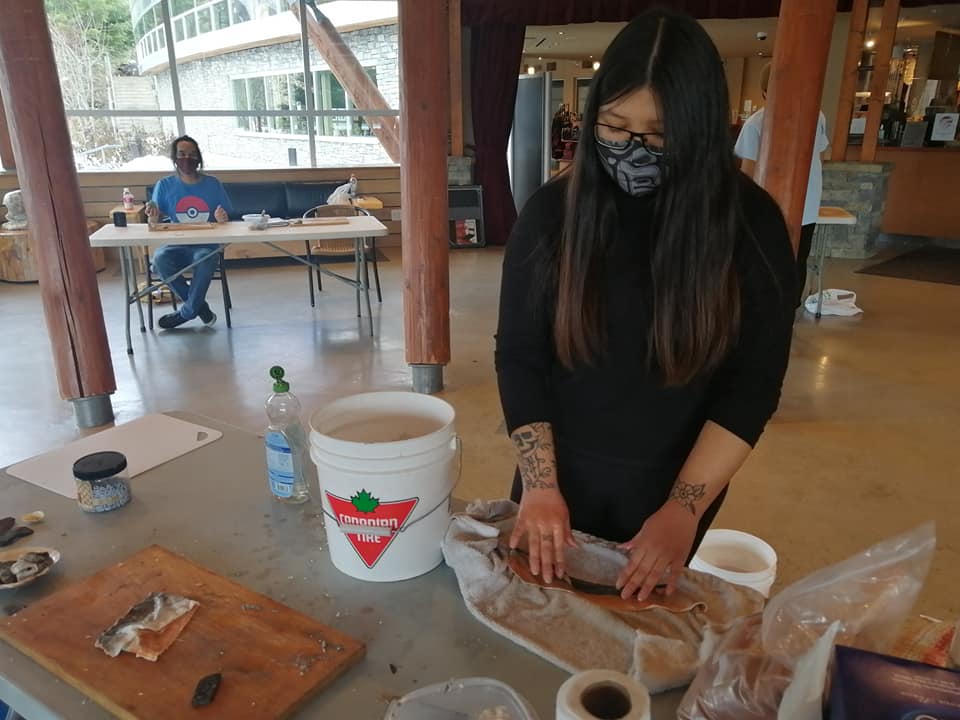
Working oil into the fish skin 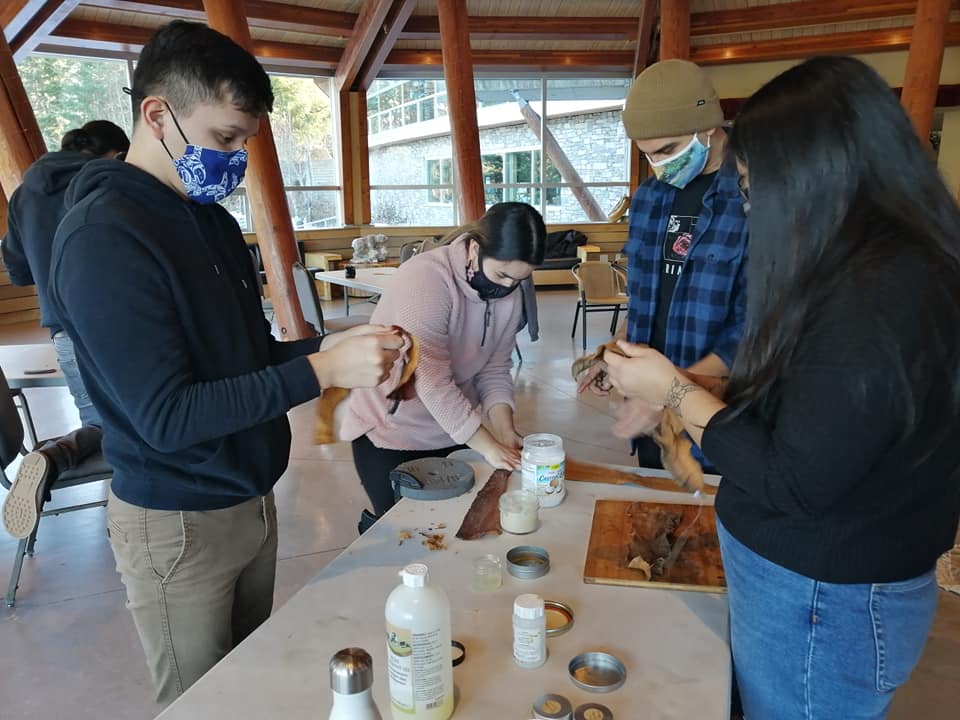
Using oils and working them into the fish skin
Tanning with Tannin
The skins are scraped of fat and flesh and placed in two separate tannin solutions for one week (One solution comprised of ground up Oak Gall, and the other had been made with Orange Pekoe Black Tea. The solutions were strengthened throughout the week by adding more substance.). The skins in the two solutions were stirred frequently throughout the week so that the tannins could reach all parts of the skin. These methods can be used for all types of skin.
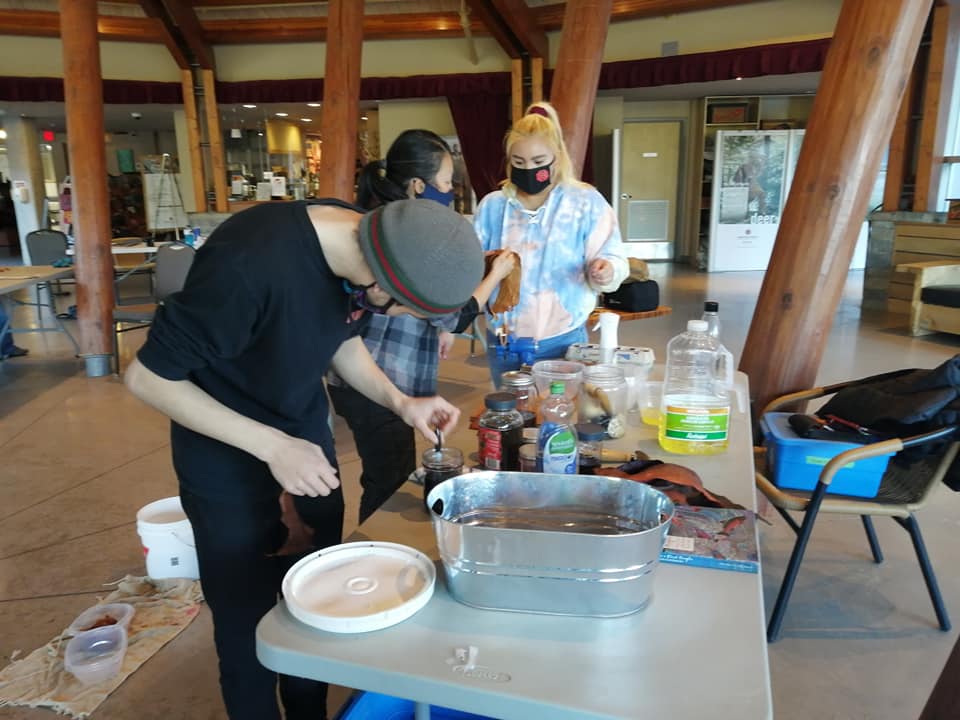
Dying the leathers 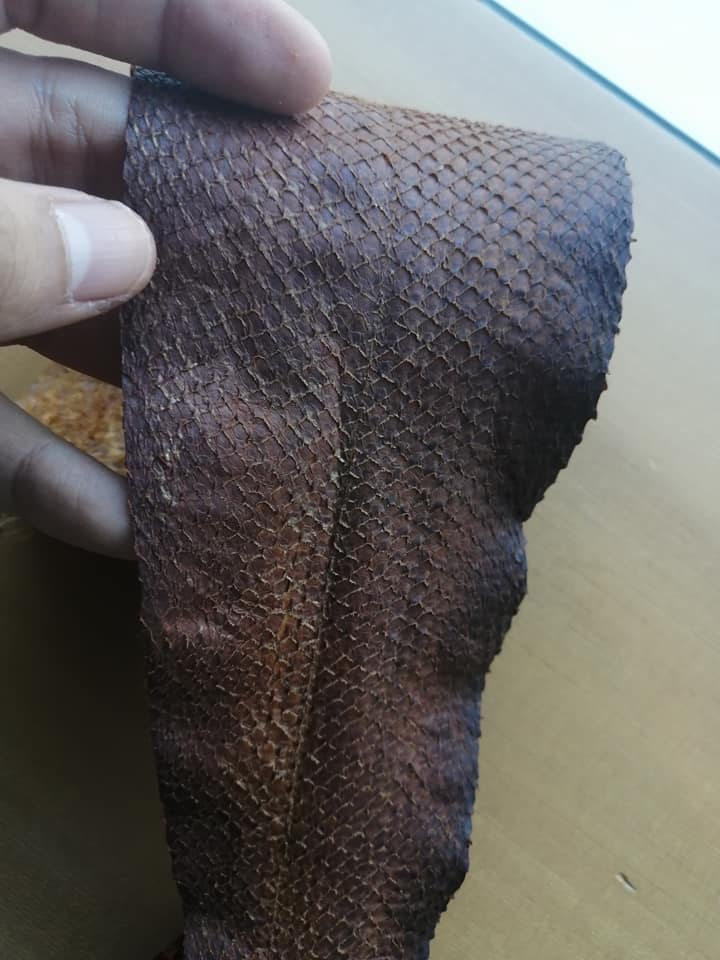
Fish Leather, darkened with rusty nails in water and tannin. 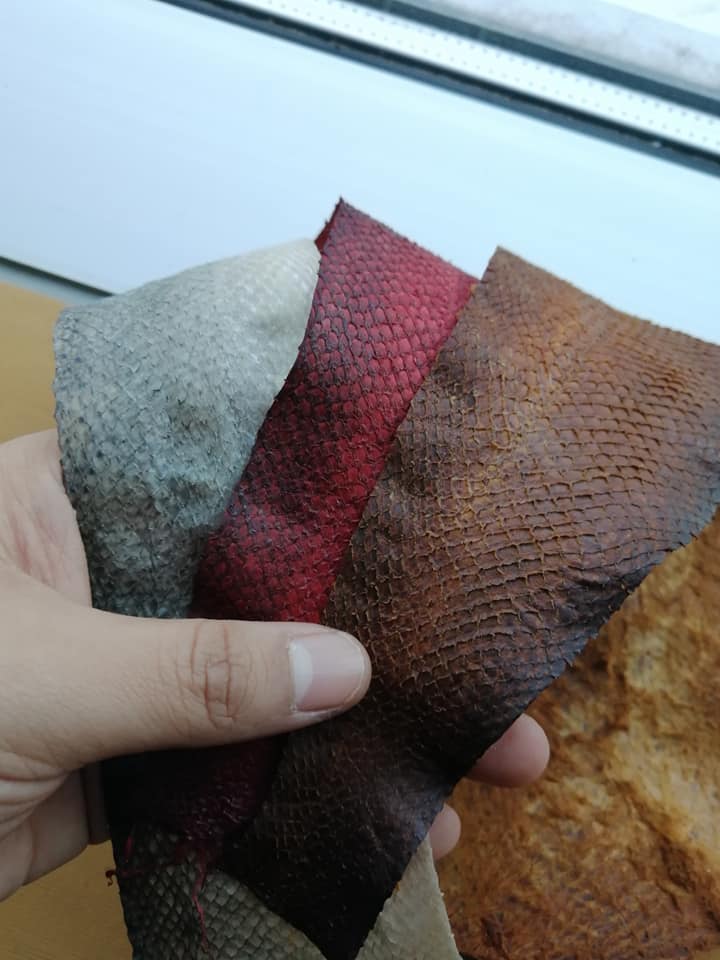
Fish leather in various colours
Tannin will often dye a material so its not used as often unless you are trying to achieve a certain colouring for your creation.
Both tanning techniques created their own unique products: the skins tanned with fats and dried on the window became very translucent, whereas the skins tanned in tea were a rich brown and the skins tanned in Oak Gall were milky looking. To dye the leathers different colours, the IYAs created colourful waters to soak their fish skins:
- Rusty nails in water made black when mixed with tannin
- Onion skins in water made peach
- Cochineal (aka bugs) in boiling water made purple
Following the softening and dying techniques, the IYAs had an opportunity to craft with their newly created leather. Some made pouches, while others made drumsticks. We were all incredibly surprised by the strength of the hide once finished: we learnt it is as strong or stronger than deer skin tanned at the same thickness!
We are very excited to have had this opportunity and hope to continue to partner with Janey Chang for future IYA Programs. This is by far one of the highlights of our current intake. Our dream is that these youth carry this knowledge they have received forward, if not by doing, then by sharing their experience with others.
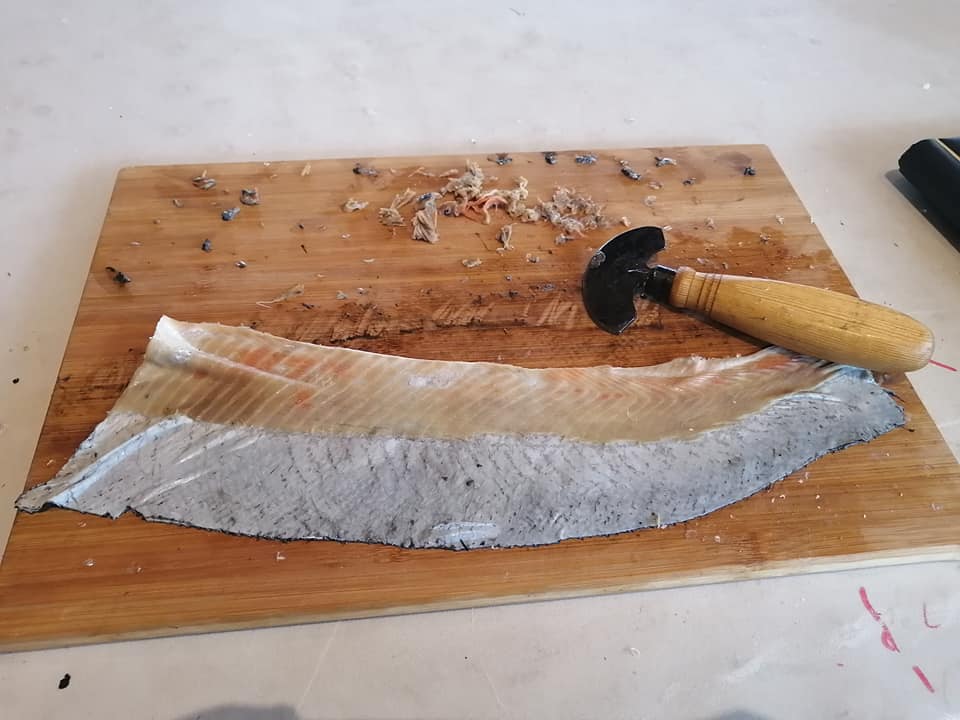
Scraping the scales_Fish Leather 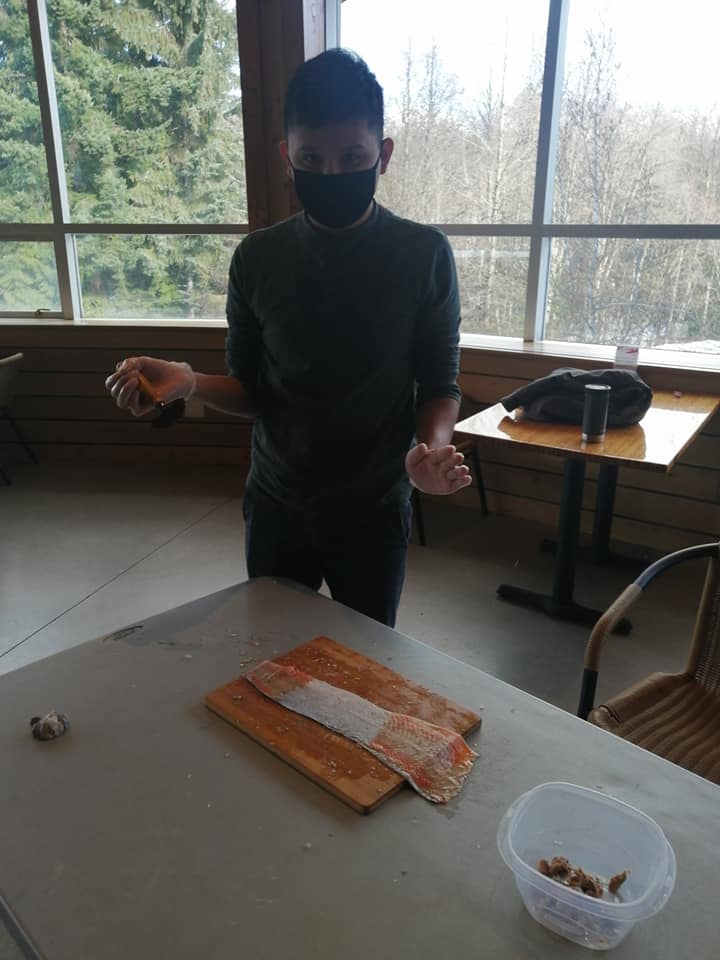
Scraping the skin of flesh and fat_fish leather 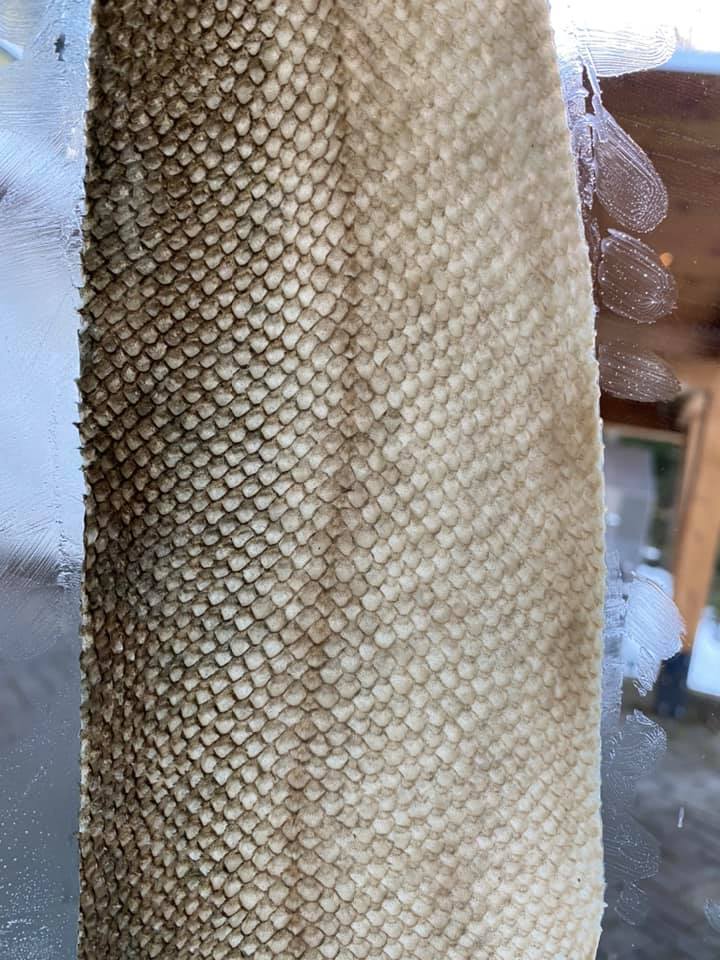
Fish skin close up_Fish Leather 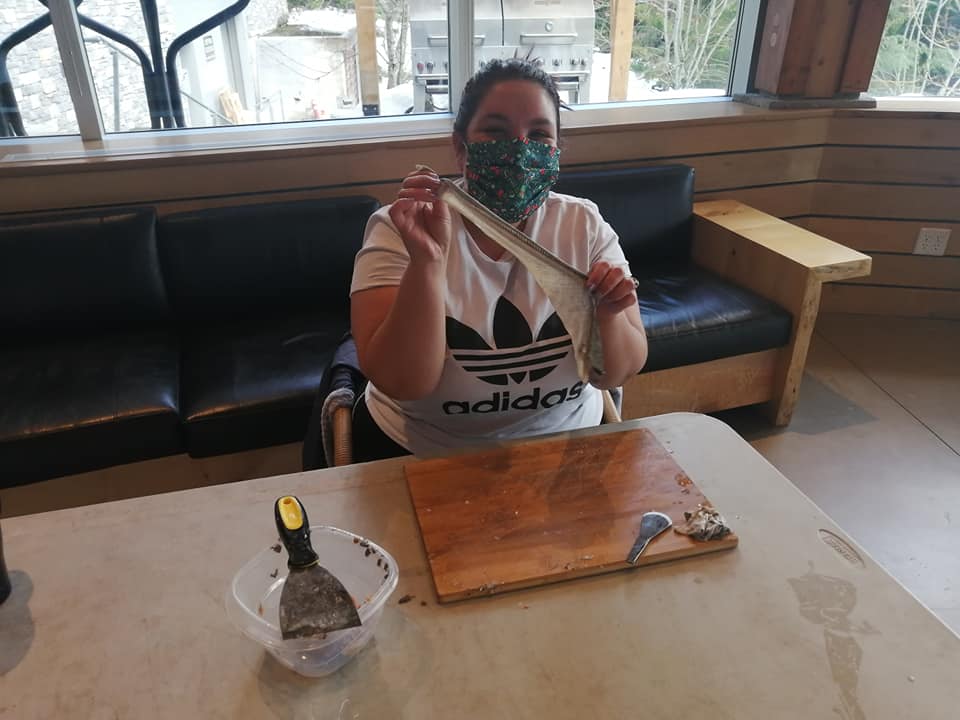
A break from scraping to smile for the camera 
Group prep_Fish Leather Workshop 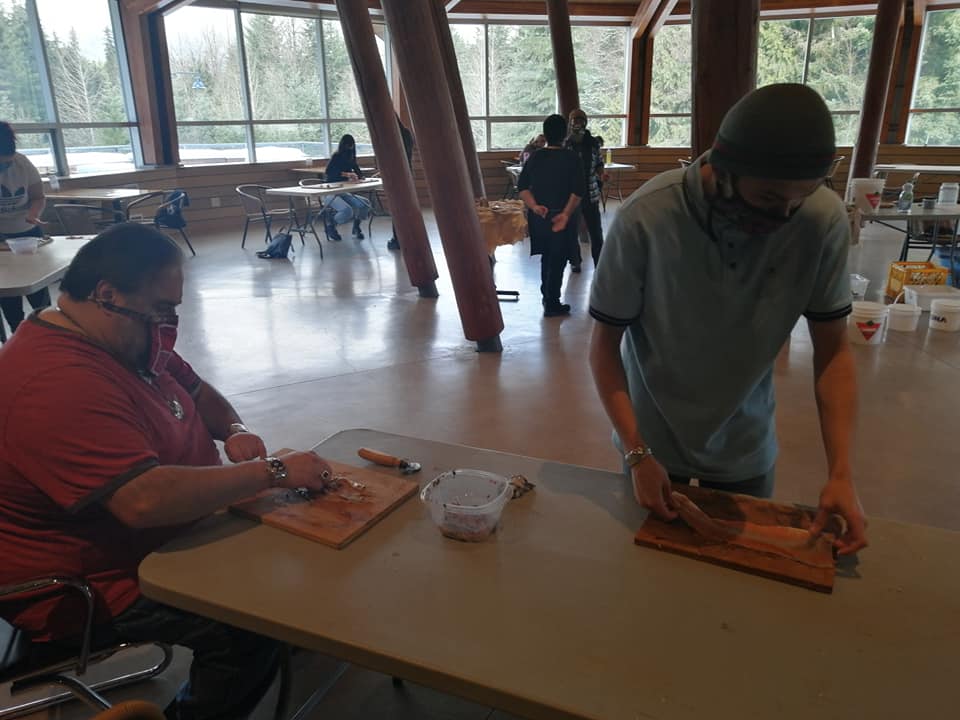
Group work on fish leather_Fish Leather Workshop 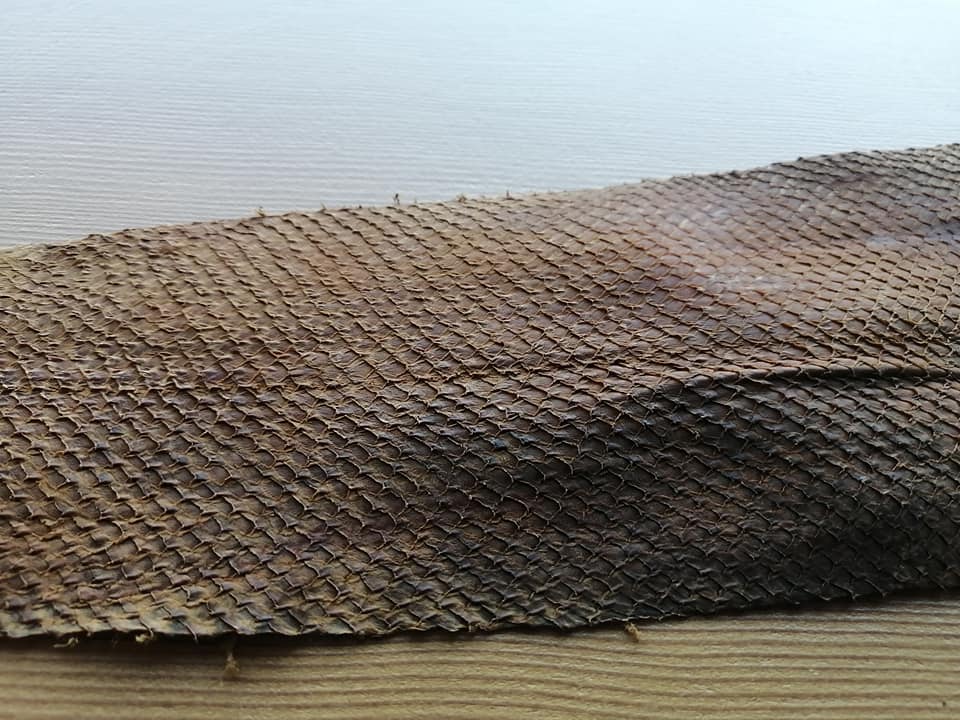
Dry skins 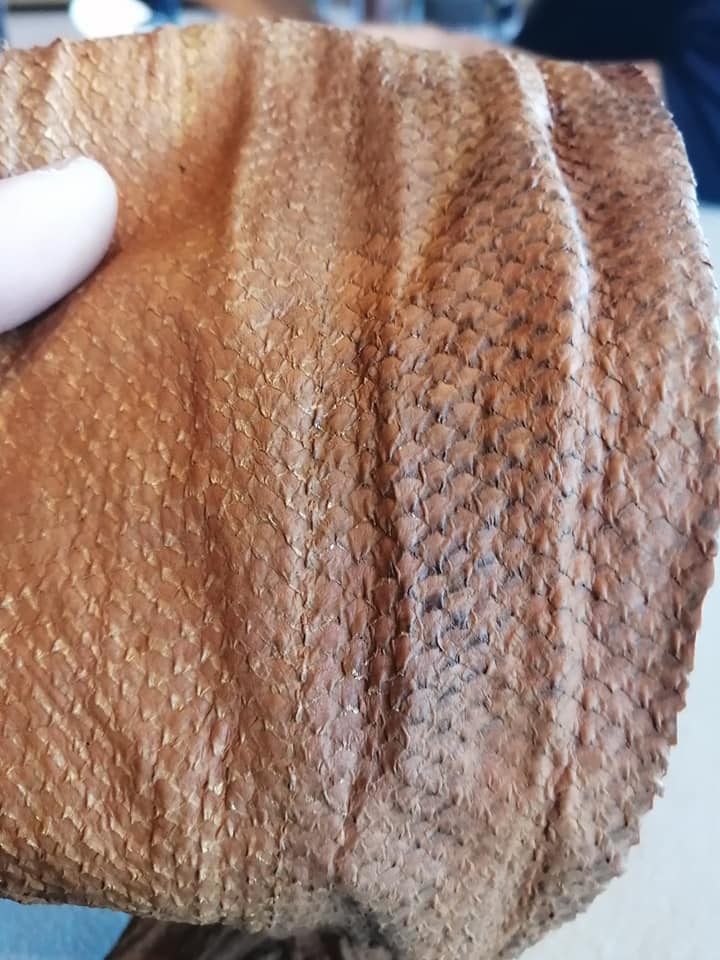
Close up Fish Leather 
Working the fish leather 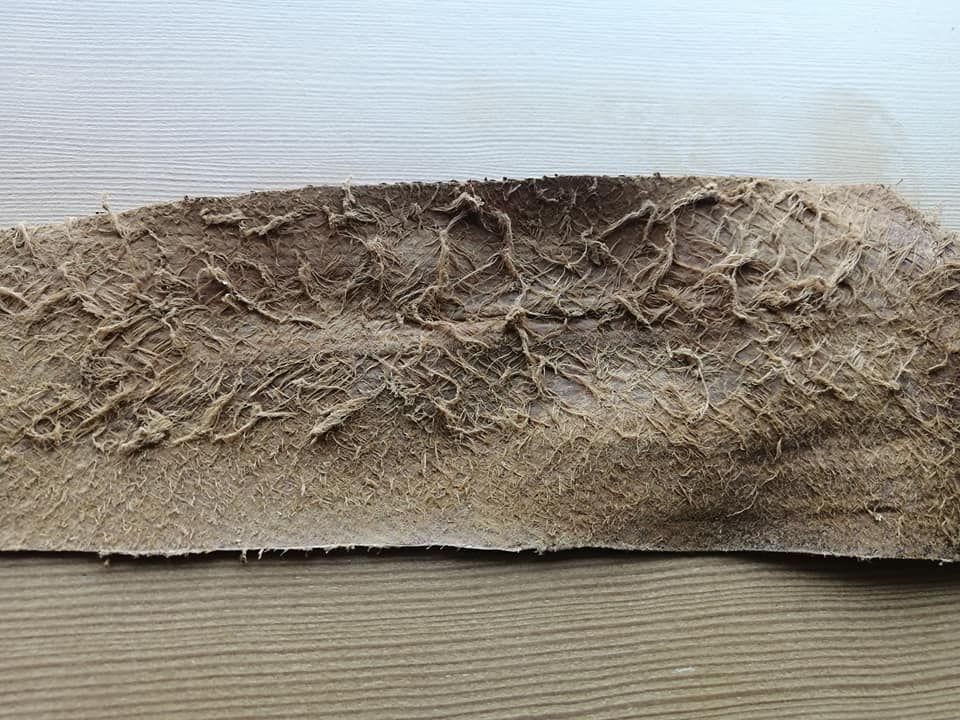
Fish leather
Chang has worked very closely with Squamish Nation member Tracy Williams on her learning journey to revitalize ancient techniques that our people have done since time immemorial. Chang has taught many classes of all ages and currently teaches ancient technologies at Capilano Little Ones School in West Vancouver. To learn more about Janey and her passion of this art form you can find her online at www.janeychang.ca FB: Janey Chang Art + Ancestral Skills IG: @janeychangart.
This blog was written by Cheximiya Allison Burns Joseph, Manager of the Indigenous Youth Ambassador Program, and Tec Georgina Dan, Supervisor of Cultural Programming at the Squamish Lil’wat Cultural Centre. Both were participants in this much-anticipated workshop and are eager to continue practicing what they learnt over these two days.
Chex̲imiya, Allison, is of the Sḵwx̱wú7mesh Nation, and she graduated from the AYA Program in 2006, prior to the SLCC opening [in 2008]. After growing up off Reserve Chex̲imiya moved on to the Eslha7án̓ Reserve for high school where she studied First Nations programs; it was during this time that Chex̲imiya found what she was missing: connection to her culture. Now the IYA Program Manager, Chex̲imiya’s passion for teaching our youth to educate the world about First Nations cultures continues.
Outside the SLCC, Chex̲imiya is a Salish Wool Weaver specializing in traditional techniques with a modern flare. She learnt how to weave from Hereditary Chief Chepx̲ímiya Siy̓ám̓ Janice George and Skwetsímeltxw Willard ‘Buddy’ Joseph. Chex̲imiya leads workshops and lends her work to exhibits throughout the Lower Mainland. She is photographed wearing a Salish woven shawl she made in the longhouse (the traditional home of the Sḵwx̱wú7mesh people).
Te̓c, Georgina, is of the Lil’wat Nation, and she graduated from the AYA Program in 2017. Te̓c attended Xét’olacw Community School and still returns to volunteer with their outdoor programs. She is very involved in the Lil’wat culture: she grew up spending time with her parents gathering various resources from the territory, and she remembers watching her dad prepare to go hunting and cherishes preparing raw deer hide when he brought home his catch. Te̓c started dancing traditional Lil’wat style at a very young age and continues to dance, both at work and for pleasure. Most recently, Te̓c was selected to apprentice with Melvin Williams to learn about weaving with cedar roots and inner cedar bark, practices that blended her love of culture and the being outdoors. Her current goal is to learn Ucwalmícwts which she is in the process of doing.
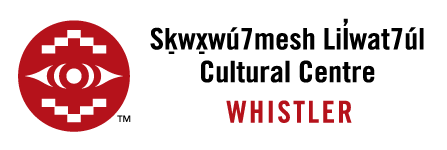

Elizabeth Barrett
Posted at 05:55h, 20 DecemberWhat a great story and project and such a fascinating ancient art form – Tracy Williams does some absolutely amazing work with fish leather. I saw her creations when she ran her workshops at Xet’olacw Community school.
JodieLynn Phillips
Posted at 11:42h, 20 DecemberI love this my grandmother helped raise me and she told me if this but didn’t know how it was done she just remembered that d St he n plenty of others had items like purses n such made of fish ides /leather she shared so many stories n this was one of them
Marlon
Posted at 04:12h, 23 DecemberIt is very important that we keep all these old technics alive.
Thank you for your work.
Yvie Rijs
Posted at 05:48h, 24 DecemberVery interesting and all with natural products. The strength of the leather really amazes me. It could be used for so many things.
Karen Thevarge
Posted at 20:51h, 11 JanuaryVery Interesting.
I would like to learn.
Are there anymore classes.
Heather Paul
Posted at 00:43h, 26 JanuaryHi Karen! So happy to hear that you found it interesting! The Ambassadors continue to create more items with the fish leather they harvested. We are looking at creating classes that can be accessible to the public this spring or summer. A great way to learn the latest programming from the SLCC is by signing up for our Newsletter. https://slcc.us10.list-manage.com/subscribe?u=4fe10bb0483816f187ab69fd6&id=9270dbfd33
Di Ana
Posted at 10:53h, 27 AprilOhi ! as a northern Indigenous kid ,that doesn’t have the beauty of living in my traditional lands, and trying to relearn my practices Thank you for these steps !
Nadija Veach
Posted at 15:09h, 17 OctoberHuy Chexw / Kukw`stumc`kalap / Thank you. We are happy you find this resource inspiring!